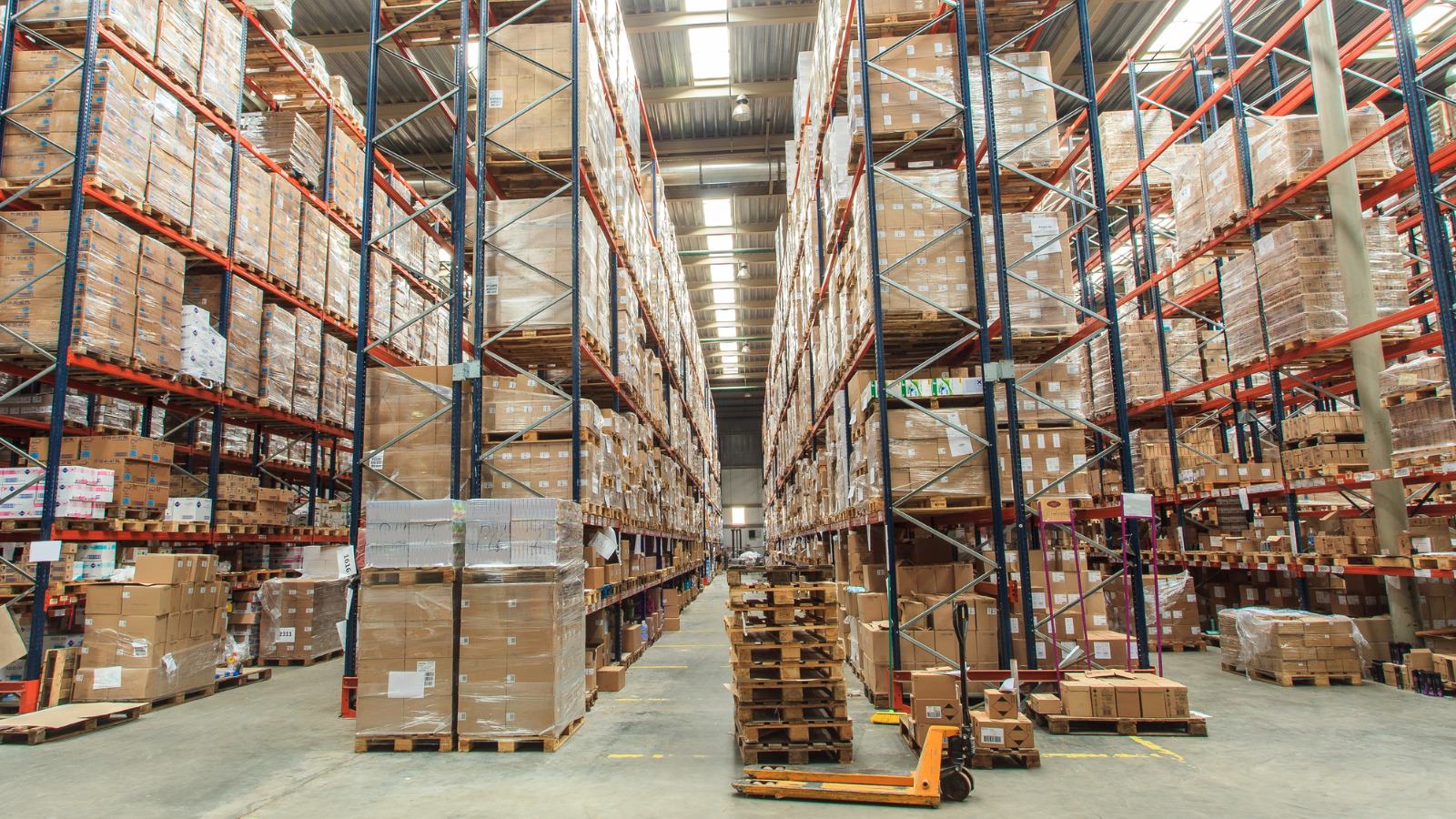From SKUs to WROs, we make it our business to stay on top of the latest trends and jargon in the ecommerce fulfilment industry — so you don’t have to.
That’s why we’ve put together this list of common abbreviations, acronyms, and terms you may come across when working with a retail fulfilment provider or self-fulfilling your orders.
We hope it helps give you some insight into the world of online order fulfilment!
Ecommerce fulfilment definitions
3PL: Third-party logistics. A 3PL provider (such as ShipBob) allows ecommerce companies to outsource logistics processes, including the warehousing, picking, packing, and shipping of orders.
Air cargo: Freight that is moved by air transportation.
B2B: Business-to-business transactions, in which one business buys products or services from another business.
B2C: Business-to-consumer transactions, in which a final customer buys products or services from a business.
Backorder: A product that is out of stock at the time an order is placed, but promised to ship once available.
Barcoding: Encoding information so that it can be read easily and accurately by an electronic barcode scanner.
Batch fulfilment: Fulfilling a large number of orders all at once. For example, crowdfunding campaign rewards are often shipped through batch fulfilment at the end of the campaign.
Carrier: The business used for delivery, such as USPS, UPS, and DHL.
Crowdfunding fulfilment: The fulfilment (packing and shipping) of rewards to backers at the end of a crowdfunding campaign.
Dashboard: At ShipBob, the platform from which merchants can connect to their ecommerce platform, manage orders, see live status updates, access advanced reporting, get in touch with ShipBob Customer Success, manage returns, and more.
Dimensional weight: An estimated weight calculated from the length, width, and height of a package, using the longest point on each side. This weight can be used to calculate shipping costs for a package.
Distributed inventory: The splitting of a merchant’s inventory across different fulfilment centres throughout the US (and potentially beyond) to achieve a lower transit time and cheaper shipping costs.
Dropshipping: An ecommerce order fulfilment model in which inventory is produced and stored by the manufacturer. When a customer places an order, the product is shipping directly from the manufacturer to the end consumer.
DTC: Direct-to-consumer, or the type of order that is sent directly to the end consumer. See B2C above.
Ecommerce platform: Software through which online businesses can manage their ecommerce website, sales, operations, and more. ShipBob integrates directly with several major ecommerce platforms, including Shopify, BigCommerce, Magento, and more.
EDI: Electronic Data Interchange. The way in which multiple systems communicate with each other to transfer information. Common EDI documents include purchase orders, invoices, and advance ship notices.
FBA: Fulfilment by Amazon. Items are offered by a third-party seller, but purchased from Amazon and stored in and shipped from an Amazon fulfilment centre to the end customer.
Freight forwarder: A person or company who arranges the transportation of products on behalf of either a seller or buyer. Freight forwarders often consolidate smaller shipments in a larger one in order to receive less expensive shipping rates.
Freight shipment: Any shipment over 150 pounds and/or with dimensions larger than 30” L X 30” W X 30” H. There are three types of freight shipments:
- Less than Truckload (LTL) = 1 to 6 pallets
- Partial Truckload (PTL) = 6 to 12 pallets
- Full Truckload (FTL) = 12 to 24 pallets
Fulfilment centre: An outsourcing solution for inventory management and order fulfilment. At ShipBob, our fulfilment centres are where our customers’ inventory is stored, managed, picked, packed, and shipped to their customers.
Fulfilment services provider: A third-party company that provides some or all of the following order fulfilment steps on behalf of an ecommerce merchant: order processing, packing, picking, shipping, and/or returns management.
Hazardous materials: Also called “hazmat.” A material that could pose a danger to people, property, or the environment if improperly shipped, stored, or handled. ShipBob offers merchants the ability to mark inventory items as “Dangerous Goods” within the ShipBob dashboard in order to comply with all regulations.
Inventory: The products on hand for any merchant at any given time.
Inventory management: The tracking of inventory levels, orders, sales, and deliveries. ShipBob allows merchants to sync inventory from their online stores, view real-time inventory counts, proactively reorder inventory, access advanced reporting to track inventory trends, and more.
Kitting and assembly: A grouping of several different items listed, purchased, and shipped under one SKU. For example, a variety pack consisting of three different items that are otherwise sold separately. ShipBob offers kitting services, in which our fulfilment centre team “kits” together the items into a single shipment when an order for a bundle or variety pack is placed.
Last-mile delivery: The transportation of a package from a hub to the package’s final destination with the goal of delivering the item as quickly and cost-effectively as possible.
Net weight: The actual or estimated weight of a good without its packaging.
On-demand warehousing: A platform that connects businesses that need to store inventory and fulfil orders on a temporary basis with warehouses that have excess space.
Order fulfilment: The complete process of receiving, processing, packing, picking, and shipping an order.
Packing: After picking, the action of preparing the picked products for shipment. This can include using custom packaging, inserts, air pillows, and other packing materials.
Packing slip: Also called a packing list. A list that accompanies delivery packages of the products included in the shipment.
Pallet: A flat transport structure used to ship and store goods in large quantities. Pallets stably support goods while being lifted by a forklift. Typical pallet dimensions (height varies):
- 48” L X 40” W X #” H
- 48” L X 48” W X #” H
- 48” L X 96” W X #” H
Picking: Within the fulfilment centre, the action of collecting a specified number of certain products from their respective locations to fulfil a customer order.
Picking list: A document for warehouse pickers containing the ordered items to retrieve from storage including inventory quantities and locations.
Receiving: Within the fulfilment centre, the acceptance of incoming inventory followed by its storage.
Reorder point: The stock level for a certain product at which inventory must be reordered to keep enough inventory in stock for orders placed in the near future. With ShipBob, you can set automatic reorder notifications to remind you when it’s time to replenish items. Choosing the right reorder notification point will ensure that there is time to send and restock more inventory before orders are put on hold for lack of inventory.
Returns handling: The receiving, processing, and potentially restocking of orders/products returned by the end customer.
Self-fulfilment: Also called in-house fulfilment. A model in which the merchant picks, packs, labels, and ships orders by themselves, without the help of a dropshipper or outsourced fulfilment solution.
Shipping zones: The geographical areas that couriers ship to, spanning from Zone 1 to Zone 8. Zone 1 is the closest area to the fulfilment centre from which the order is shipped, while Zone 8 is the furthest. Transit times and prices may increase as the zone number increases.
SKU: Stock-keeping unit. A unique code that identifies a product based on its characteristics, such as brand, style, colour, and size. For example, a small red shirt would have a different SKU from a medium red shirt.
Split shipment: When a single order containing multiple products is sent in separate shipments. This means the customer receives more than one package even though they ordered everything together.
Storage fees: Also called warehousing fees. The cost to store inventory in a 3PL’s warehouse or fulfilment centre. For example, ShipBob charges a different rate each month for bin space vs. pallet storage.
Warehousing: The practice or process storing of products in a warehouse. A 3PL can be a cost-effective alternative to a traditional warehousing model by allowing merchants to pay only for the space they use.
White-label shipping: The lack of carrier or 3PL branding on shipping materials sent to the end customer. At ShipBob, merchants can choose to use free, unbranded packing materials or supply their own custom-branded boxes. Either way, ShipBob’s name will not appear on the packaging.
WRO: Warehouse Receiving Order. A form completed ahead of time provided for each shipment from the client to the 3PL to let the 3PL’s receiving department know what exactly is being sent to the warehouse(s).
We hope this glossary helps you navigate the world of ecommerce order fulfilment. Interested in learning more? Check out the ShipBob Blog and subscribe for updates to your inbox.
Learn more
Learn about how partnering with a 3PL can help your business scale, and get tips for choosing a fulfilment partner. Download “How to Choose a 3PL for Your Ecommerce Business.”



